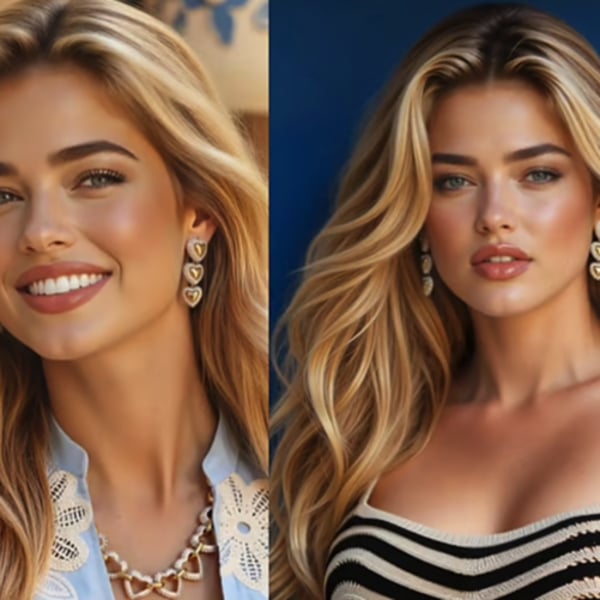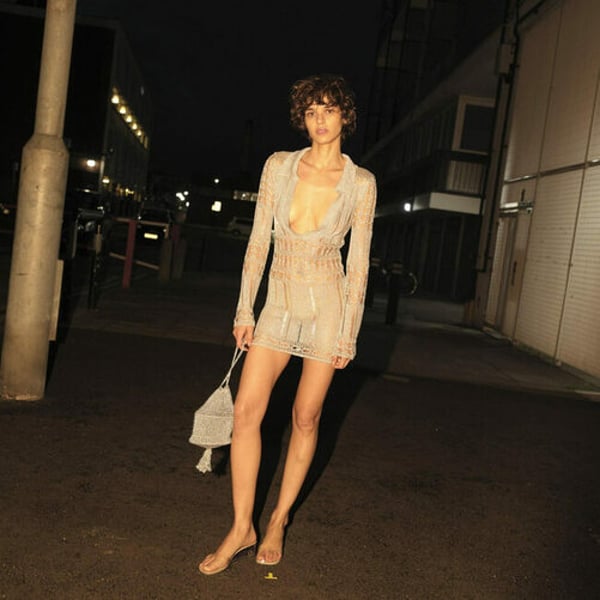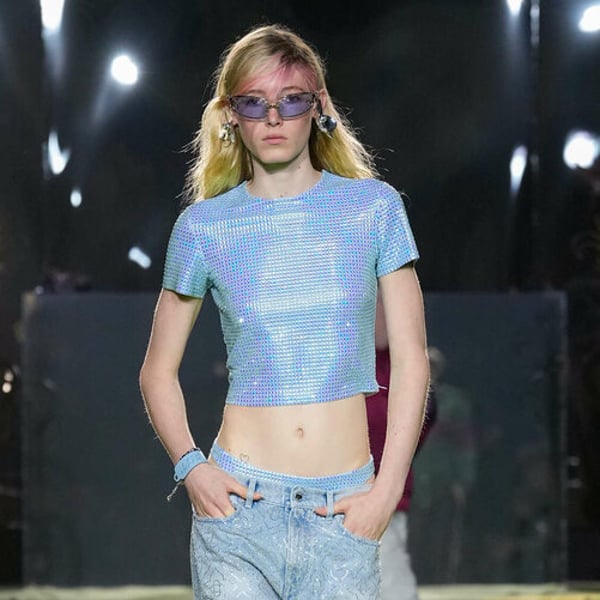Translated by
Nazia BIBI KEENOO
Published
August 1, 2025
Vogue US sparked major debate when it ran a Guess ad featuring artificial intelligence–generated visuals in its August 2025 issue. The campaign stirred widespread backlash from readers, image professionals, and content creators, who see it as a warning sign for creative industries. The double-page spread showed a blonde model with light eyes and full lips wearing a sky-blue top and a black-and-white patterned dress. Vogue included a footnote confirming the images came from AI, but readers flooded the magazine’s social platforms with criticism.

Social media users and TikTok creators expressed frustration with the decision, citing Vogue’s legacy of groundbreaking photographers like Irving Penn, Lee Miller, and Erwin Blumenfeld. Critics argued that AI contradicted the magazine’s artistic foundation. Although Vogue stated that the ad came from its advertising department, not its editorial team, many readers still saw it as a symbolic turning point. The placement raised bigger questions about the industry’s reliance on human creativity.
Seraphinne Vallora created the AI visuals
Marketing agency Seraphinne Vallora designed the campaign. The company has promoted its synthetic models across Elle, Grazia, Harper’s Bazaar, the Financial Times, and the Wall Street Journal. On Instagram, the agency showcases its AI-generated visuals and promotes its ability to replicate real-life models through digital scans.
Brands like H&M have already used these AI body doubles, allowing real models to fulfill contracts without attending photo shoots. These avatars save time and reduce production costs.
U.S. laws such as the “right of publicity” protect personal features like a model’s face or voice. Companies must obtain consent before using AI likenesses. But disputes still occur. Scarlett Johansson, for instance, accused OpenAI of using her voice without permission—sparking another legal controversy.
Although the U.S., the UK, and the EU enforce laws to regulate AI-driven use of personal identity, industry professionals continue to raise concerns about the impact on makeup artists, stylists, photographers, and production crews.
Creative professionals push back
Many journalists and artists now use AI to streamline repetitive tasks, but this Guess campaign reignited fears that companies will use AI to replace—not support—creative professionals.
On Newstalk Tech’s TikTok account, correspondent Jess Kelly said, “This puts people out of work. And creatively, a photoshoot isn’t just about the model—it involves photographers, lighting crews, and an entire team working behind the scenes.”

Governments and unions act on copyright
To protect human-created work, unions and lawmakers are stepping in. The European Union adopted the AI Act in April 2024 to regulate synthetic media. This legislation, rolling out through 2027, requires companies to disclose AI-generated content, publish training datasets, and respect intellectual property—even when using open-source tools.
In journalism, the International Federation of Journalists (IFJ) published formal recommendations in January 2025. “AI cannot replace human journalists,” the report stated, “and its production should not be considered journalism unless it undergoes proper human oversight.”
INA, the French audiovisual institute, published a report outlining AI’s risks and benefits in the newsroom. It praised AI for boosting speed, format diversity, and translation—but warned that it also encourages content standardization, audience detachment, and unchecked data mining. The authors argued that publishers risk prioritizing cost over quality.
AI won’t affect every media role equally
Despite industry anxiety, some roles may adapt instead of disappearing. A 2025 report by consulting firm BearingPoint examined how generative AI could impact broadcast journalism jobs. The study flagged roles like documentalists, subtitlers, motion designers, editors, and translators as highly automatable.

But BearingPoint identified other roles—such as reporters, web editors, data journalists, and community managers—that could shift toward supervising AI output, managing quality control, or using AI as a creative partner.
In short, the firm believes that many image and information professionals can evolve with the technology rather than get replaced by it.
Still, the reaction to Vogue’s Guess ad shows that industry players view AI as a serious threat to creative labor. As Condé Nast navigates this backlash, it faces a critical choice: either establish clear rules for advertisers—or risk weakening the very ecosystem that defines its brand legacy.
Copyright © 2025 FashionNetwork.com All rights reserved.



